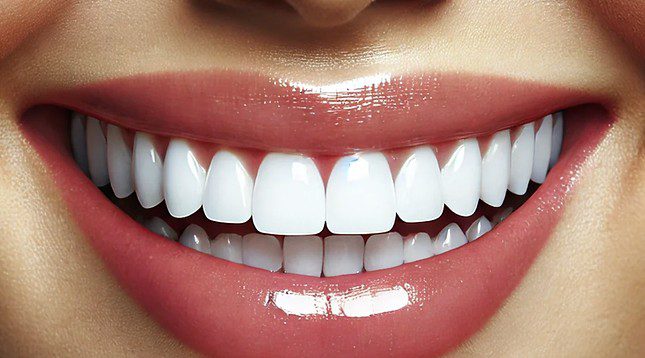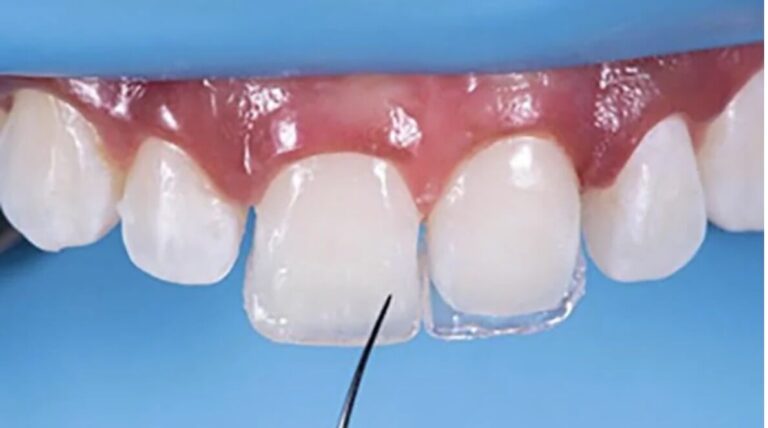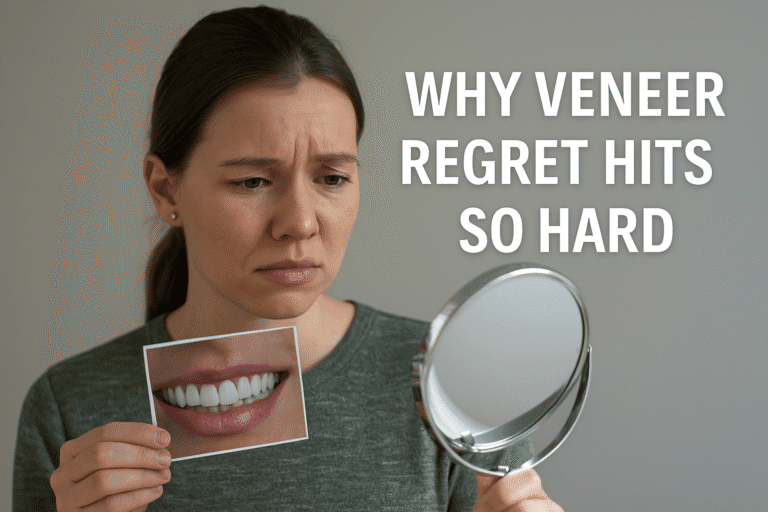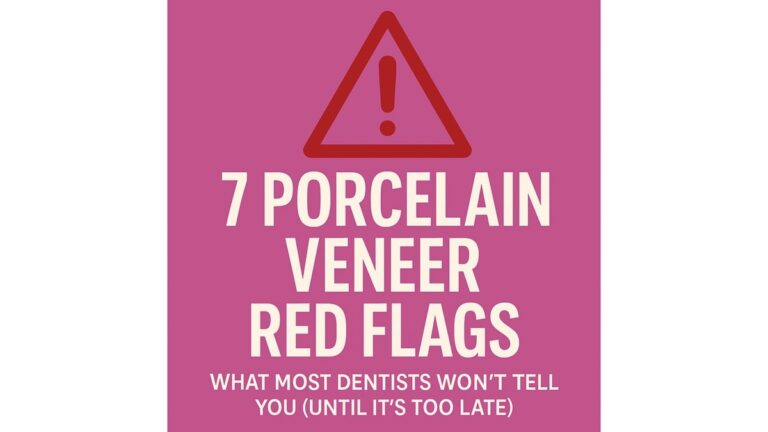Introduction
Matthew Stafford’s veneers have quickly become a hot topic, not just among football fans but also within the world of cosmetic dentistry.
His smile transformation has sparked debate about how far patients should go in the pursuit of perfection and who bears responsibility when permanent procedures come with lasting consequences.

Stafford reportedly had healthy, natural teeth, the kind most people would dream of keeping for a lifetime. Yet instead of choosing a conservative, reversible enhancement such as composite bonding, he underwent a full mouth of porcelain veneers.
This path means significant tooth reduction, routine maintenance, and costly replacements that will continue throughout his life.
So why did it happen? Was it a personal choice made without fully understanding the risks? Was it a dentist eager to profit from a celebrity client?
Or was it the veneer industry itself, pushing aggressive marketing and profit-driven models that prioritize corporate gains over patient care?
This is not just about one quarterback’s smile.
Stafford’s veneers highlight larger issues in cosmetic dentistry — issues of ethics, accountability, and the growing pressure to sacrifice healthy teeth for an idealized image.
Matthew Stafford’s Smile Transformation
When Matthew Stafford appeared with his new veneers, the reaction was immediate. Fans noticed the difference in shape, brightness, and uniformity compared to his natural teeth.
Social media lit up with before and after comparisons, sparking both admiration and criticism.

Porcelain veneers are marketed as thin, natural looking shells that cover the front of teeth. But what most people do not realize is that the process often involves grinding down healthy enamel so the porcelain can be cemented into place.
Once that enamel is gone, it can never grow back, making veneers a lifelong commitment.
Stafford’s teeth appeared healthy and strong before treatment, leading many to ask why risk a permanent procedure when less invasive options were available.

The Case Against Dentists
Dentists are meant to follow the principle of non maleficence, do no harm. When patients already have healthy teeth, filing them down for cosmetic gain raises serious ethical questions.

In Stafford’s case, some critics argue that the dentist should have prioritized conservative solutions like bonding or whitening instead of pushing porcelain.
Veneers cost significantly more than bonding, and they require replacements every ten to fifteen years. For dentists, this creates a steady stream of high paying procedures.
Was Stafford’s dentist acting in the best interest of the patient, or the best interest of their bottom line?
The answer fuels the debate about whether celebrity clients are being guided toward choices that preserve their long term health or toward treatments that generate maximum profit.
The Role of Veneer Corporations
Beyond individual dentists, there is a powerful machine at work, the porcelain veneer industry itself. Corporations spend heavily on marketing, positioning veneers as the ultimate solution for a perfect smile.
Many companies also promote subscription based sales models, where dentists commit to purchasing veneer systems in bulk or through ongoing contracts.
This creates financial pressure to sell more porcelain, regardless of whether patients truly need it.
When Stafford’s veneers hit headlines, the veneer industry benefitted.
Every photo, every debate, and every viral post helps normalize veneers as the gold standard of cosmetic dentistry, even when safer, less invasive alternatives exist.
Patients and Informed Consent
Should Stafford himself shoulder some of the blame? On one hand, patients are responsible for asking questions and understanding the risks.
On the other, most people, even wealthy celebrities, rely on their dentist’s expertise and may not fully grasp what lifelong maintenance means.
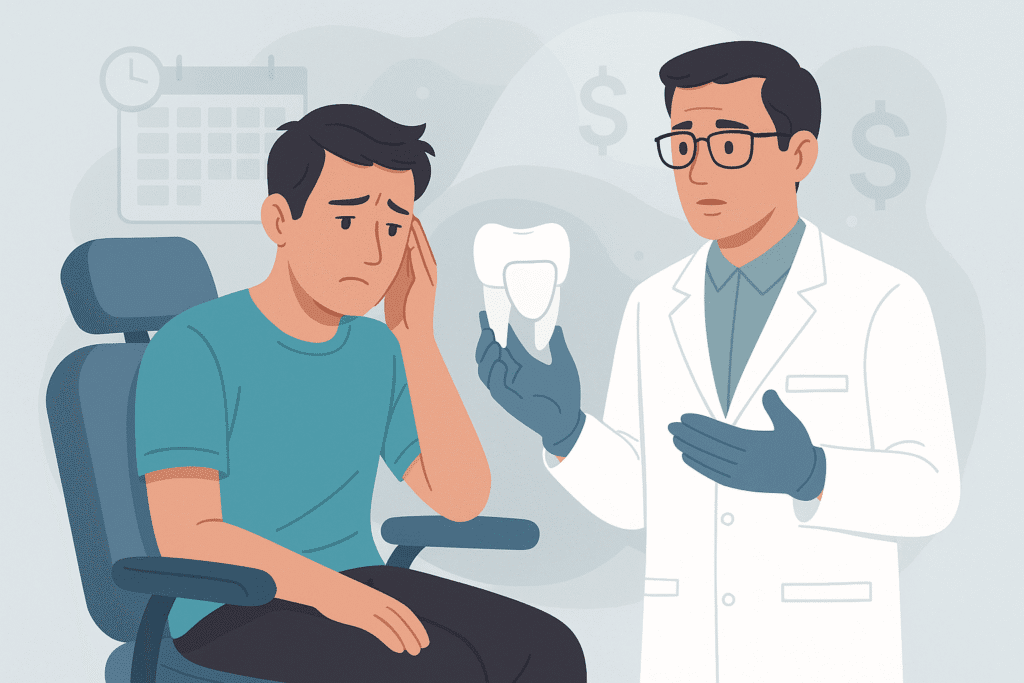
Porcelain veneers are not just a one time expense. They chip, crack, and need replacing, often costing tens of thousands of dollars over a lifetime. If Stafford was not fully educated on this commitment, it raises questions about informed consent.
Was he truly aware of what he was giving up by choosing veneers over bonding? Or was the permanence of the procedure softened by promises of a flawless smile?
Alternatives Stafford Could Have Chosen
Stafford’s case underscores an important truth, he had options.
- Composite bonding: A conservative treatment where tooth colored resin is layered directly onto enamel. It is additive, meaning no enamel needs to be removed.
- Enhanced resins: Modern composites can mimic the translucency and shine of natural enamel while still being reversible.
- Whitening and minor reshaping: For someone with healthy teeth, a simple cosmetic tune up can go a long way.
These alternatives preserve natural tooth structure and can be adjusted or repaired without grinding teeth down to stubs.

By choosing porcelain, Stafford entered a cycle of dependency, one where replacements, maintenance, and repairs are inevitable.
His story is a reminder that patients should always be told about conservative treatments first, especially when their teeth are already healthy.
The Bigger Problem in Cosmetic Dentistry

Matthew Stafford’s veneers are just one example of a wider issue in modern dentistry. The industry has increasingly shifted toward profit driven cosmetic procedures, often overshadowing the importance of preservation.
Social media and celebrity culture have made the Hollywood smile the gold standard. Yet what fans do not see is the hidden toll:
- Repeated drilling every ten to fifteen years to replace veneers.
- Financial strain from tens of thousands in long term costs.
- Emotional toll when patients regret sacrificing their natural teeth.
Stafford’s situation shines a spotlight on how cosmetic dentistry is often less about health and more about selling an image, one that can come at a steep cost to patients.
Final Thoughts Who’s to Blame
So who is responsible for Matthew Stafford’s porcelain veneer nightmare? The answer may not be simple.
- Dentists who prioritize profits over patient well being.
- Corporations that flood the market with aggressive marketing and sales models.
- Patients who, without full awareness, agree to procedures that cannot be undone.
The reality is that all three play a role. But the takeaway is clear, healthy teeth should never be sacrificed for cosmetic gain.
For anyone considering veneers, Stafford’s story is a cautionary tale. Ask about alternatives, question the risks, and remember that once enamel is gone, it is gone forever.

Disclaimer: This article is for educational and informational purposes only. It is not intended to provide medical or dental advice. All references to Matthew Stafford’s veneers are based on publicly available discussion and speculation. We are not affiliated with Matthew Stafford, his dentist, or any dental corporations. Readers should consult a qualified dental professional before making decisions about cosmetic treatments.
For a deeper look at how celebrities have faced similar issues, see our article Beneath the Veneer: The Dark Side of Celebrity Porcelain Veneers Before and After Picture
If you have questions about this article, need help understanding your options, or want to know what to ask during a consultation, we’re here to help. Just leave us a message — even a quick question like:
- “Do you know any qualified dentists who offer enhanced composite resin veneers?”
- “How do I know if this is right for me?”
- “What are the typical costs among providers for enhanced composite resin veneers?”
- “What should I ask my dentist before starting treatment?”
- “Is there a way to tell if my teeth are healthy enough for this type of veneer?”
- “What’s the difference between traditional bonding and enhanced composite resin?”
Every person’s case is unique, and while we’ll do our best to answer your questions and share helpful insights, always consult a licensed dental professional before making any treatment decisions.

